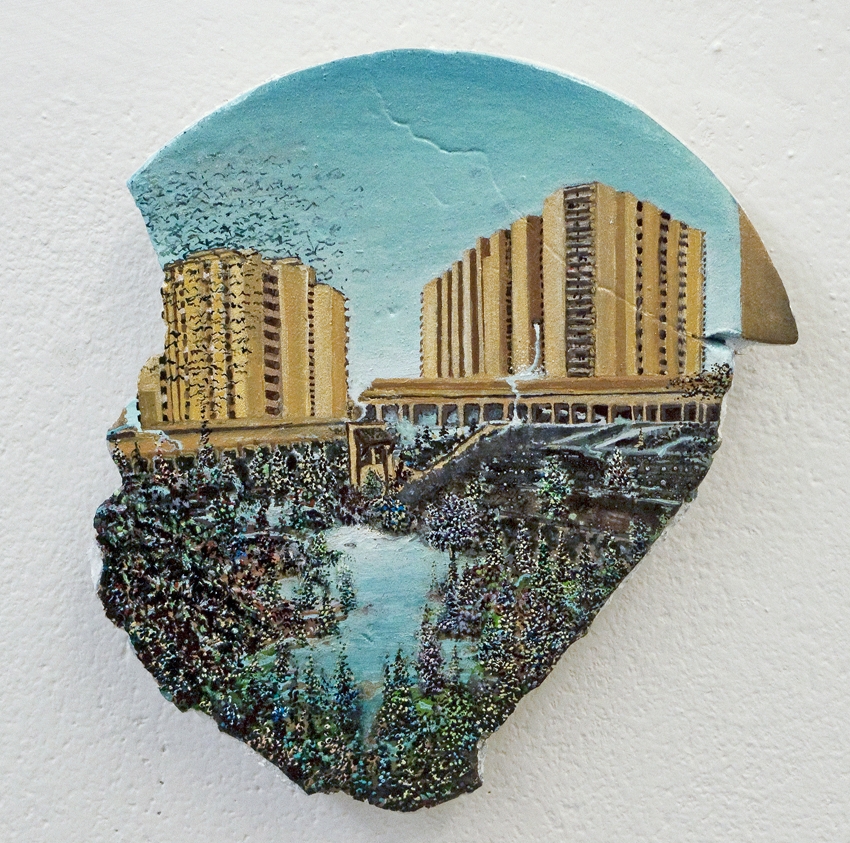During the 1950s, architect Constantinos Doxiadis was invited by the Lebanese government to devise a national plan for social housing. Eighteen different types of residential building were developed, each responding to the Mediterranean climate, regional topography and local building materials. However, a change of government in 1958 caused the ambitious plan to be forgotten – and since then nothing similar has been proposed or realised. Until recently, that is, when the artist Marwa Arsanios dug the drawings out of Doxiadis’s archives in Athens and made them the starting point for a new work.
In After Doxiadis Social Housing Project (2013–), two of the residential building types have come alive in the shape of maquettes. They are two-storey, concrete, single-family houses with wooden details and generous balconies. Considering that Doxiadis is best known as the architect behind Islamabad (which itself is a reflection of the discipline of ‘ekistics’ – the science, identified by the artist in 1942, of where and how people settle and how largescale and complex habitations come into being), the two residential buildings show a surprising attention to detail. Curious about how a corresponding project, based on ideas of social justice, could look today, Arsanios turns to contemporary urban planning and architecture: how do they relate to the idea of housing for all, in 2014?
Her work gives us a fragment of a grand vision, originally formulated in the immediate postwar period and reanimated by a contemporary artist. She joins a number of artists – among them Dominique Gonzalez-Foerster, Pierre Huyghe, Pia Rönicke, Terence Gower, Jakob Kolding, Sabine Bitter & Helmut Weber, Solmaz Shahbazi & Tirdad Zolghadr, Minouk Lim, Marion von Osten and Florian Zeyfang – who have engaged with late-modernist housing since the 1990s. This might even be described as a genre. Sometimes the interest is interwoven with other concerns and motives, at other times it is the main focus in the work, which might, for example, take the shape of video essays, posters, installations, paintings, photographs or wallpapers.
Late-modernist housing is a global phenomenon, and so are artists dealing with it
The question ‘Is modernity our antiquity?’ – the leitmotif of Documenta 12 (2007) – can here be answered with a clear ‘yes’. Modernity, and even more so Modernism as a programme, is the light that envelops all these works. Most of these artists have treated the phenomenon of late-modernist housing (often large-scale and industrially produced) as interesting albeit scary planning feats, as well as ideologically challenging political proposals and programmes. They even address the aesthetic refinement and downright beauty of this kind of architecture, otherwise typically described as monotonous, rough and ugly. Or even as ‘a carbuncle on the face of an elegant friend’, as Prince Charles famously described a modern proposal for the extension of the National Gallery in London 30 years ago.
Often the artworks focus on an individual building that they describe and portray through research into its origin and current state, frequently including the voices of the inhabitants. Heidrun Holzfeind, to take one example, has delved into Il Corviale, a one-kilometre-long housing complex from 1972 outside Rome, and Mies van der Rohe’s elegant Colonnade and Pavilion apartment buildings in Newark.
Late-modernist housing is a global phenomenon, and so are artists dealing with it. Many of them have profound and concrete knowledge of the buildings and their locales – in some cases they have grown up in these places; in others they still reside in them. Furthermore, in many parts of the world these buildings and areas are contested sites: economically and socially deprived, stigmatised as ghettos and prone to contemporary bare life. Thus, they have become condensors of the more general living conditions under neoliberalism, and fertile grounds for anything from books such as the Invisible Committee’s The Coming Insurrection (2007), films like La Haine (1995) and Attack the Block (2011), hip-hop by Sweden’s Adam Tensta and this whole genre of visual artworks.
At the same time, these areas are turning into contemporary cultural heritage. By now, this is the heimat of several generations. Viktor Rosdahl’s small and detailed painting Elineberg 2020 (2009) depicts two of the five highrises in Elineberg, Helsingborg, in the south of Sweden (where the artist himself grew up). Designed between 1958 and 1965 by Jørn Utzon (famously the architect of the Sydney Opera House), they are rebuilt in Rosdahl’s futuristic scenario. But more importantly, vegetation is creeping up against the buildings and a waterfall is coming out of a window. It is dystopian and melancholic, postcivilisation like Piranesi but without the street-smart moralism of Hogarth or so many other works in this genre. Nature is about to take over completely in Elineberg – not a single human being can be spotted.
This article was first published in the April 2014 issue.
